In April, 2018 I travelled to Nantong and Taizhou (both cities are closely located in Jiangsu province of China). As usual, my trip started from Suzhou, then I went to Nantong (南通, Nántōng), and then stopped in Taizhou (泰州, Tàizhōu) before returning back to Suzhou. I have earlier traveled to so many cities in China using high-speed train including, Nanjing city (Jiangsu, China), Hefei or Changzhou. While planning for the April trip, I realized that there was no direct train from Suzhou to Nantong. So, I had no other option than to opt for a bus trip. This was the very first time that I was using the bus to travel from one Chinese city to another.
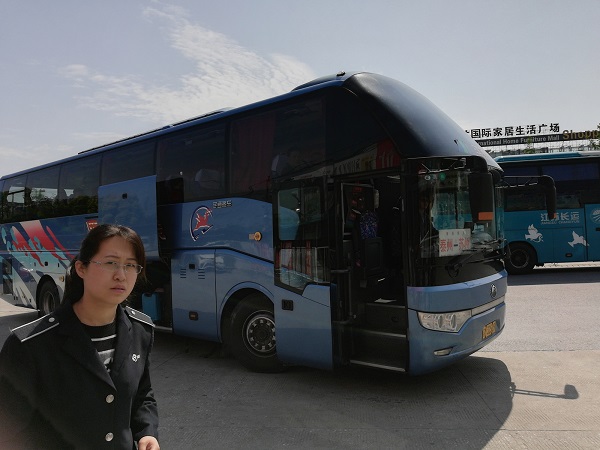
So, this post- the Chinese Intercity Bus Travel Guide, is aimed at helping future China dweller to understand about the bus system operate in China. I’ll be sharing all the important details, including the advantage and disadvantages of bus travel in China. Stay with me for a while!
I’m also adding the photos that I clicked during the same trip. Moreover, relevant bus station names along with pinyin and Chinese characters are also provided – just enter them in the Baidu map, and you’ll be able to find them soon.
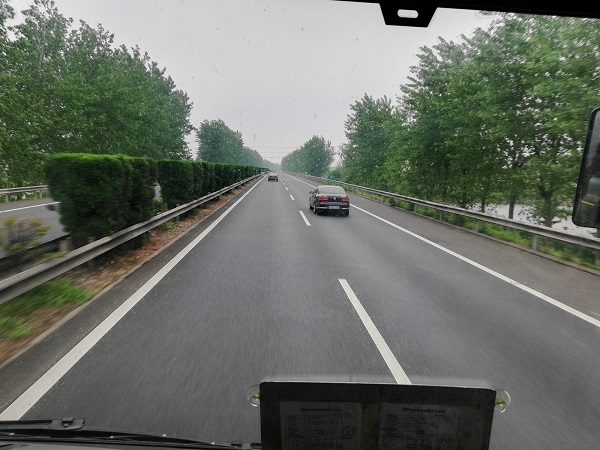
Note – please keep in mind that this post is not about how to use the Chinese bus to travel in a particular city (intracity buses), for that you’ll need to visit my other post – Suzhou Tourism & Transport. This post is all about travelling from one Chinese city to another city- the intercity buses.
Here is the scenic video from my scenic Chinese bus ride-
Related post – Qunar.com Flight Booking Review & China Travel.
Benefits of bus travelling
Before we see details about bus trips, lets first understand some key advantages of the intercity bus travel in China-
- The main reason for choosing a bus trip is that the direct trains are often not yet available between all cities. For example, there is no direct train from Suzhou to Nantong. Also, there is no direct train from Taizhou to Suzhou (you’ll need to go Nanjing and then transfer to another train heading to Szuhou),
- Chinese buses, in general, are clean, safe, and modern,
- The Chinese bus schedule is known in advance – you can check the schedule on Baidu map,
- You can use online bus ticket booking app (find more details below),
- Offline Chinese bus tickets are available on each bus station – just show up, buy your tickets, and get going,
- Chinese bus station location – there could be multiple bus stations in each Chinese city and you can find either subway or local bus connecting the intercity bus stations,
- Smoking is not allowed on the buses,
- Fast bus speed – Nantong to Taizhou bus speed often crossed 100km/hr – I was sitting just behind the driver and monitored the speed closely.
Some disadvantages of travelling by bus in China are provided in the last section of the article (I don’t wanna talk negative issues at this point). 🙂
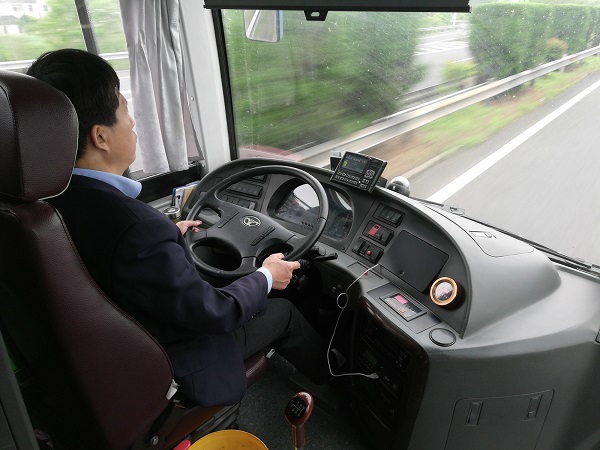
Understanding the source and destination stops
Well, the Chinese cities are generally huge, and usually there are more than one bus stations in any Chinese city. So, before you head to an intercity bus station, make sure to work out the exact direction to the correct bus station.
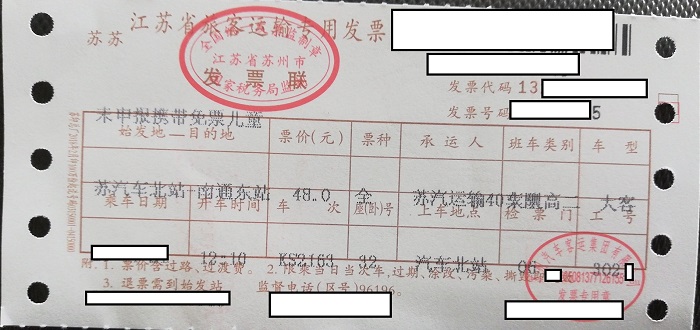
Let me share with you the names and other details in my China bus travel route from the April trip-
-
Suzhou to Nantong
- Source station- Suzhou North Bus Station (苏州汽车客运北站, Sūzhōu qìchē kèyùn běi zhàn),
- Destination station – Nantong East Bus Station (南通汽车东站, Nántōng qìchē dōng zhàn),
- Chinese bus ticket fare – RMB 48,
- Mode of bus ticket payment – cash, bought ticket at the bus station ticket counter,
- ID proof required – yes, I had to present my passport while buying the ticket, and also while entering the bus boarding area,
- The ticket was checked before entering the bus,
- Chinese bus schedule –duration 2hrs, non-stop. The bus followed timings as mentioned on the ticket,
- Seating structure in the bus – 2*2 (4 seats in each row- two on each of the aisle).
-
Nantong to Taizhou
- Source station- Nantong Automobile Group Jiuhao Port Bus Station (南通汽运集团九圩港汽车站, Nántōng qì yùn jítuán jiǔ wéi gǎng qìchē zhàn). The station name was printed on ticket as: 南通九圩港汽车站,
- Destination station – Taizhou City (泰州市, Tàizhōu shì),
- Chinese bus tickets Fare – RMB 43, cash, bought ticket at the bus station,
- ID required – No ID required while buying tickets, no ID check while boarding the bus,
- The ticket was checked before entering the bus,
- Chinese bus schedule: duration- 2 hours. The bus started on time and then non-stop to Taizhou,
- No toilet on the bus. No stoppage for lunch or toilet,
- Seats- 2*2.
-
Taizhou to Suzhou
- Source station (Taizhou) – Gaogang North Bus Station (高港汽车北站, Gāo gǎng qìchē běi zhàn),
- Destination station (in Suzhou)- Suzhou Nanmen Bus Terminal (苏州南门汽车客运站, Sūzhōu nán mén qìchē kèyùn zhàn) – printed on ticket as 苏州南站,
- Chinese bus tickets Fare – RMB 66, cash, bought a bus ticket at the station,
- ID required – No ID required while buying tickets, no ID check while boarding the bus. I was the lone passenger boarding from the Taizhou station for Suzhou. However, the bus was nearly full as it originated earlier elsewhere,
- The ticket was checked before entering the bus,
- Chinese bus schedule – duration- 2.5 hours. The bus arrived 10 minutes late and then nearly non-stop to Suzhou,
- No toilet in the bus. No stoppage for lunch or toilet,
- Seats- 2*2.
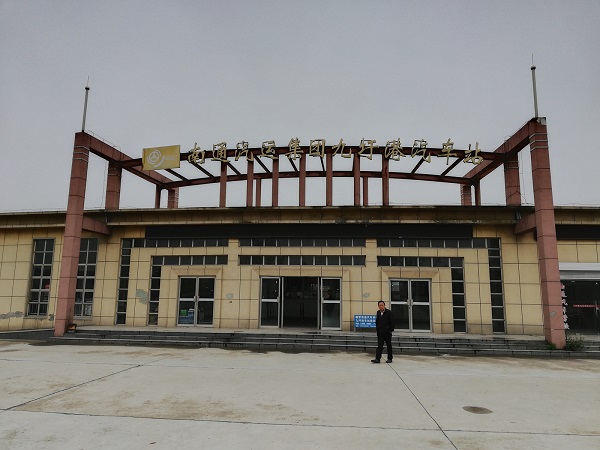
How to find the source and destination stations?
You can use the Baidu map to find the exact location of the source and destination bus stations.
No matter where you are in China, just search in Baidu map and it’s going to tell you exact routes of the intercity buses. For example, if you are searching a bus trip from Shanghai to Suzhou, you can search in Baidu as-
- Source: Shanghai (上海市, Shànghǎi shì)
- Destination: Suzhou (苏州市, Sūzhōu shì)
Basically, add 市 (shì) in the city name. 市 means city in Mandarin Chinese.
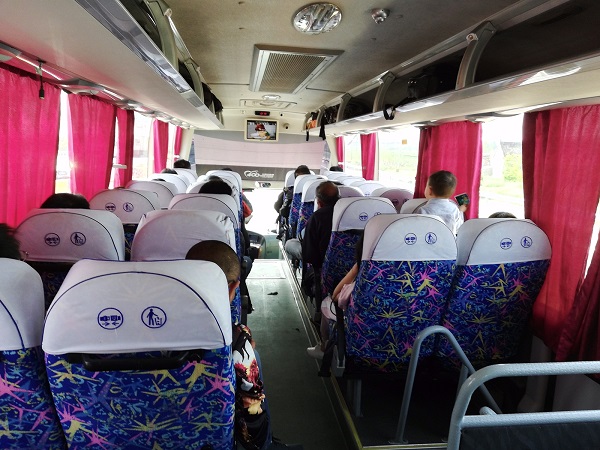
online bus ticket booking app
There are many Apps in China for buying Chinese bus tickets online. For example, you can use Alipay or Baidu to book the bus tickets. However, as far as I understand, both Baidu and Alipay require a Chinese ID number to book a ticket – and obviously foreigners don’t have it. So, it’s better to buy the ticket at the bus station counter. Moreover, I didn’t see any cheap Chinese bus tickets using these Apps – the bus fares look to be the same even if you buy tickets either using online bus ticket booking app or either at a bus station counter.
So, as a foreigner, I think there is no need to waste time trying to buy Chinese bus tickets online. Just head to the bus station and buy the ticket at the official ticket counter.
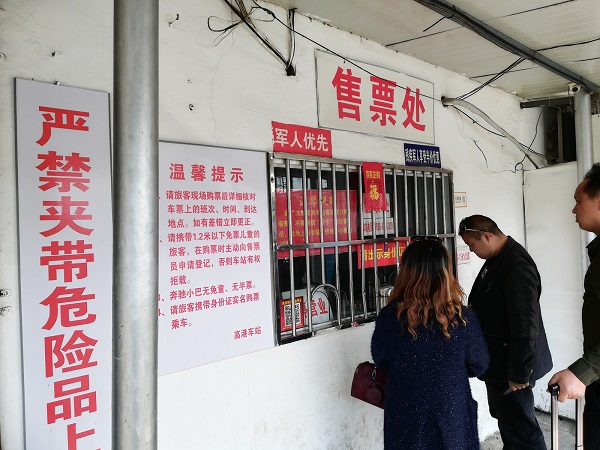
Do you need to carry cash in China?
Well, yes. Make sure to carry some cash all the time. For example, at the Suzhou bus station, I realized that only cash was accepted at the bus ticket counter. They strictly don’t accept Alipay or WeChat pay. Unfortunately, I was not carrying RMB 48. I queued up for 7-8 minutes in the bus ticket queue only to realize that WeChat/Alipay was not accepted.
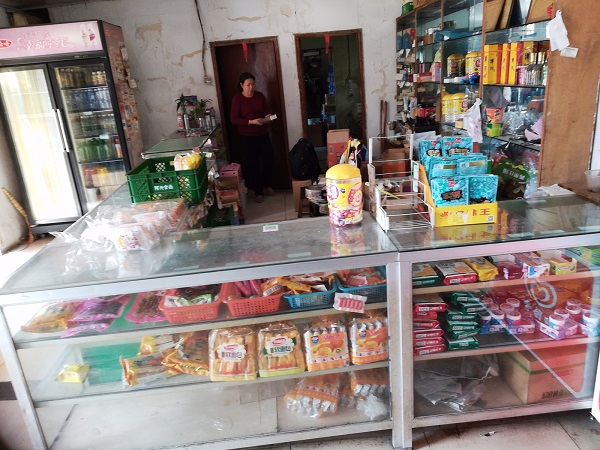
Then I came out of the queue and saw two ATM machines at the bus stop, however, the machines were out of order – they didn’t work. I talked to the security guard and they humbly helped me- one of the guards gave me RMB 100 cash, and I transferred him RMB 100 using Alipay.
Subsequently, I queued again at the ticket counter and got the ticket to Nantong. After reaching Nantong, I withdrew a few hundred cash from ATM to not get stuck somewhere due to lack of the cash.
My message is – even if you are in China for a short travelling, make sure you have few hundred cash with you – who know when there is a compulsion to use them.
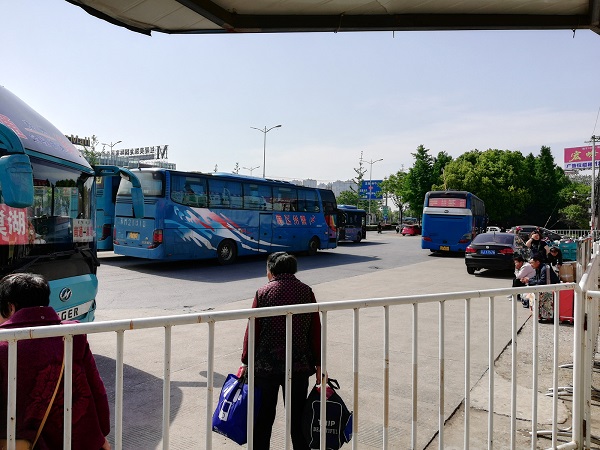
How about food in bus
Well, my routes were short distant and the bus didn’t stop anywhere until reaching the final destination. No food was included in the bus ticket, and obviously Chinese buses don’t have meal supplies. But you can buy food/drinks before boarding at the bus station and carry it on to the bus.
Related post – local Chinese food in Hefei, Anhui.
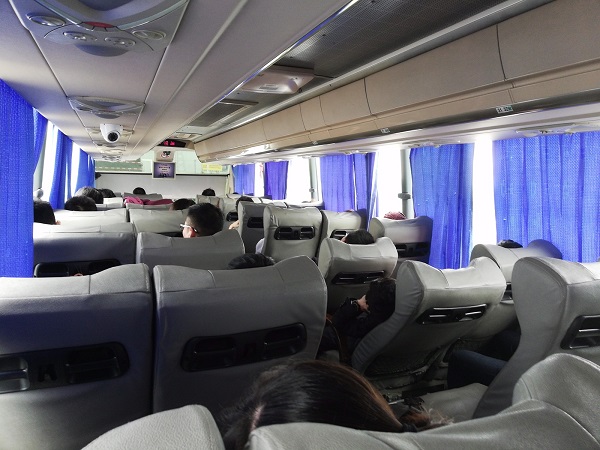
Comfort level
The bus seats in all the three buses were very much comfortable -you can also bend your seat backwards and sleep peacefully. In fact, my buses were usually not full (there were many empty seats).
In my Nantong to Taizhou bus, my seat was on the back side of the bus, but I came to an empty front seat to take pics and videos of the country side. Overall, the bus journeys were by and large comfortable.
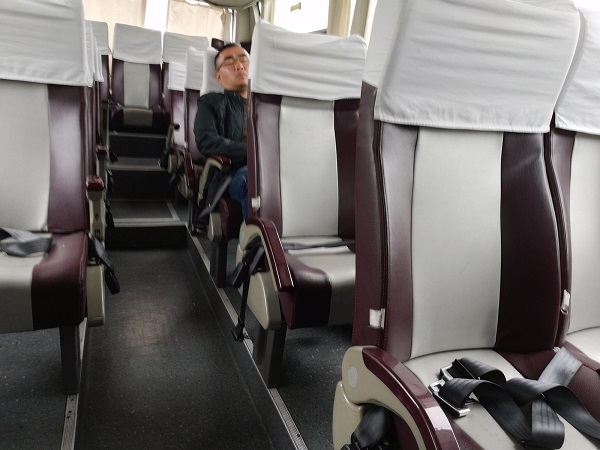
Luggage allowances
I was travelling with two bags – a camera bag and a heavy travel bag. I checked in the heavy baggage and the camera bag had been always with me. Nobody weighted my bags. As such, I don’t think there are any issues if you are travelling with two or three bags.
Baggage tips – You may note that the bags go through x-ray scan at the bus stops. I was asked about a long shaving cream pack in my bag. I was asked to open the bag and throw away the shaving cream. However, after my request, I was able to carry the bottle (and I didn’t open the bag). I think its ok to not have such items in your bag.
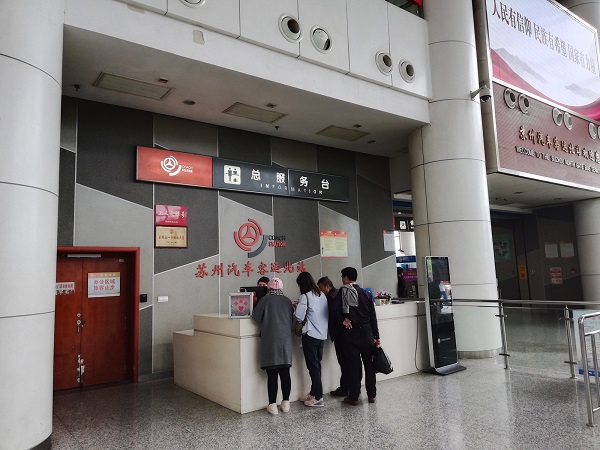
Overall rating of the bus services
I think I would personally rate my three-bus experience at somewhere around 9/10, and wouldn’t be surprised if you say that it should be 9.5/10 or beyond.
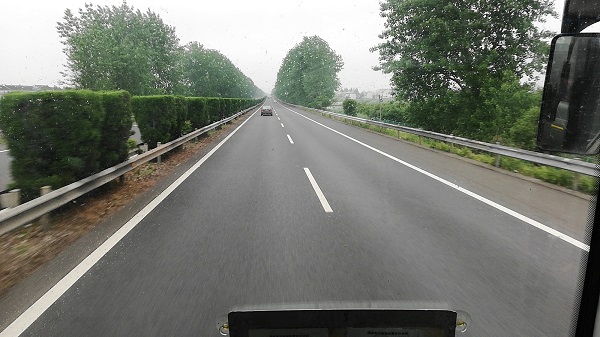
Disadvantages of bus travel in China
Alright, now we are in the last section of this post.
So, as I promised earlier, now let me write down some problems with the Chinese bus system. Hopefully, they could be addressed by the relevant local authorities-
- A bus service may not be available between two cities in the night hours. For example, there is no bus late night bus from Suzhou to Nantong. The last bus to Nantong from Suzhou departs at around 7.20pm,
- A long bus journey could be tiring,
- It seems there are no toilets in the Chinese buses (in Australia there are toilet in the bus),
- In all the three buses that I rode ran non-stop. I think a 5-minute stop in a 2.5hrs journey would be appreciable,
- The Taizhou bus station could have been cleaner. The waiting hall was quite poorly maintained,
- There was no air-conditioning at the bus stops,
- The use of the English language is rather minimal, including those on the bus tickets,
- Allowing payment in the form of credit card, Alipay, WeChat, etc. at the bus counter would be a make ticket buying a more convenient exercise,
- Please put some functioning ATM machines at each bus stop, and if there were already ATMs, make sure they are not out of order,
- Toilets at bus stations are in poor health, a regular cleaning of toilets would be a great initiative,
- Smoking in the toilets should be strictly prohibited. Put tissue papers in the toilets. In general, there were neither bidet not tissue paper in the toilets at bus stations.
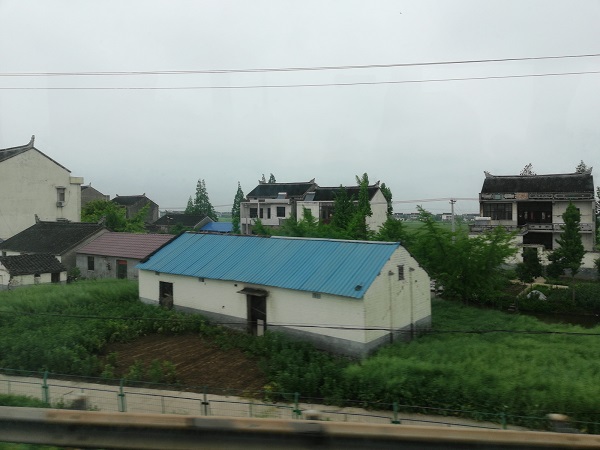
In summary, I think you can opt for a bus ride if there are no trains or if you just want to get a feel of a bus trip in China. The view of the countryside from the bus looks just great, the bus run fast, and take you to the remote destinations. The fares are rather cheap. Addressing the issues highlighted in the previous section would further make the bus a favorable conveyance choice for the vagabond travelers.
That’s all in this post about Chinese Intercity Bus Travel Guide. 🙂
Do check out my other posts about Nanjing City Travel Reviews (Part 1 and Part 2).
If you have any question about Chinese Intercity Bus Travel Guide, feel free to post in our forum so that others could also contribute and learn. For regular updates like us on Facebook, or follow on Twitter!
If you find the write-ups useful, don’t forget to buy me a beer!
Happy travelling in China.
Cheers!
Last updated: Monday, May 28, 2018